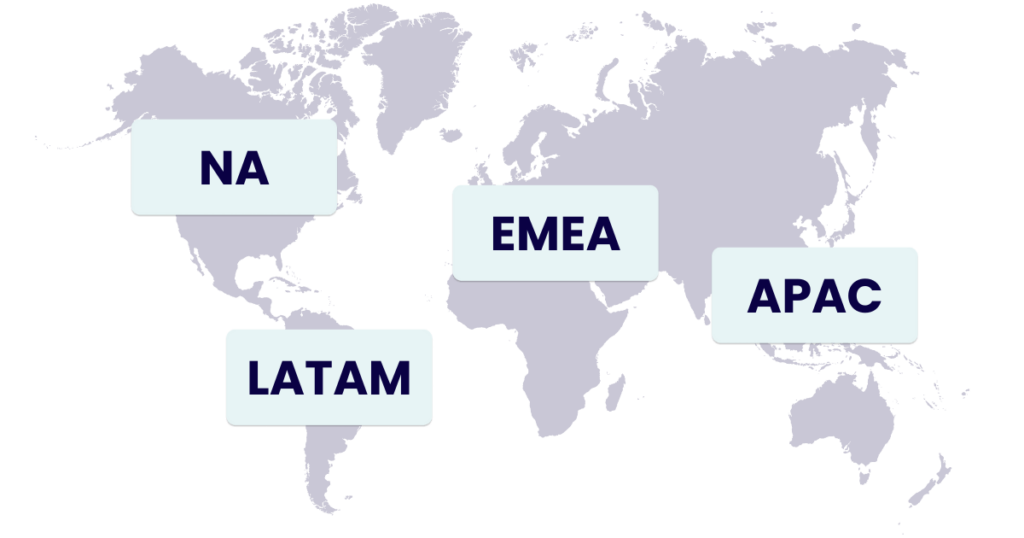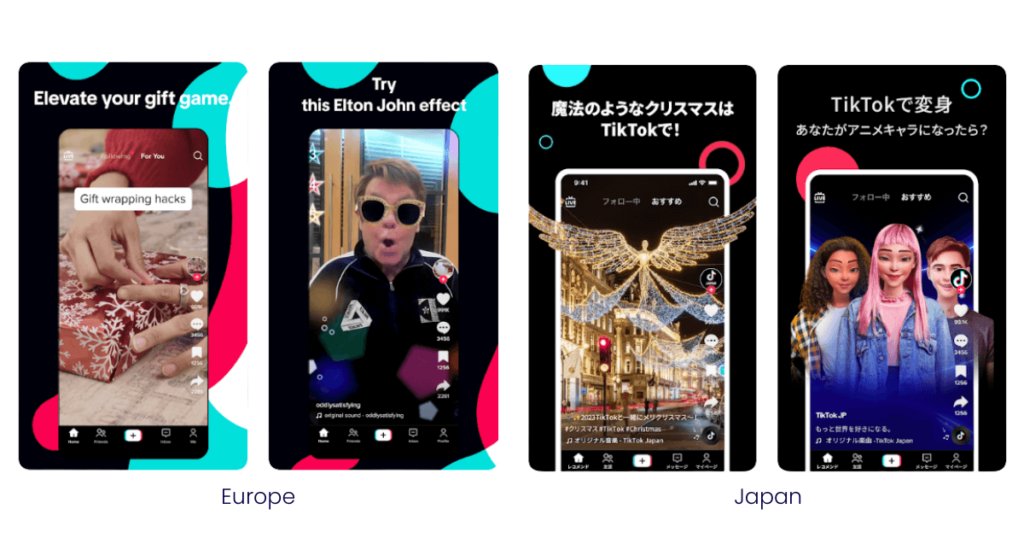Expanding your UA efforts to new app markets can be exciting and scary at the same time.
While sticking to familiar GEOs may provide comfort and stability, entering new markets opens doors to untapped potential.
How should you approach global expansion? What are the main factors you should take into account?
You’re in luck because we have plenty of experience with this. Allow us to guide you through the process with our list of do’s and don’ts for approaching new markets.
Do: Align Your Goals with Market Choices
Ok, so you’ve decided to consider expanding your UA efforts to new app markets.
Where to?
To answer this question, think about where you’re currently at and where you want to be. For example, many mobile gaming studios traditionally focus on established markets in the US and Europe.
Yet, so many opportunities await outside these markets.
Generally, it makes the most sense to try and break into rising or emerging markets. For example, two popular choices are APAC (Asia-Pacific) and LATAM (Latin America)

When choosing new app markets to expand to, think about your goals and how they fit each market’s characteristics. This includes market size, growth rate, competition, demographics, and economic welfare.
For example, if you want to tap into lucrative markets for IAPs, consider going into countries like Japan and South Korea. On the other hand, if you want more downloads quickly, think about approaching emerging markets like India and Indonesia.
Do: Thorough Market Research
Once you’ve chosen a potential market to expand to, it’s time to dive deeper and conduct extensive research on it.
Here are some target market characteristics to analyze:
- User preferences. Understand which app features, genres and mechanics are most popular among users in this market.
- Localization requirements. Find out how important is localization for users in this market.
- Competition presence and strategy. Analyze how similar apps approach this market and identify opportunities to differentiate.
- Effective UA channels. Explore which UA channels have a proven track record of success in this target market.
- Regulatory environment. Check for local regulations related to data privacy, content restrictions, etc.
Do: Have a Clearly Defined Target Audience
Venturing into new app markets is always simpler when you know who you want to target. So, instead of casting a wide net, focus on defining your target audience.
To find this out, answer questions like: Which demographic is most likely to use your app? What are their interests? Which social media platforms do they use?
Let’s say you have a puzzle game and want to reach new gamers in South Korea. To define your target audience in this market, you’ll need to explore the main characteristics of South Korean gamers who typically play puzzle games.
Naturally, this process will take some time and effort.
If you work with a UA partner that has market experience, they will already have this information. At MAF, for example, we have extensive knowledge of promoting different types of apps in South Korea — from RPG and puzzle games to finance apps. When app developers want to explore a market they never tapped before, we help them define their target group based on years of experience and in-house market data.
Do: Localize Fully If Needed
In certain markets, if your content isn’t localized, you won’t even stand a chance.
The first step in the app localization process is translating text. This includes ad creatives, in-app text, and app store assets.
But, localization goes beyond translation.
Another equally important localization step is adapting to cultural preferences. For example, Japanese users usually have different design preferences than their Western counterparts. While Westerners prefer clean aesthetics with little text, the Japanese are more drawn to vibrant and colorful designs with plenty of text.

In a nutshell — your app’s creatives, style, and tone of voice should simply “feel right” to the target audience. To achieve this, make sure to have your localized material reviewed by a native.
Do: Start With a Modest Budget
When entering new app markets, make sure to test the waters first.
Start with a conservative budget and gather initial data for your user acquisition campaigns. In this phase, you probably won’t get amazing results, but you’ll find out if it makes sense to continue your efforts in this market.
Although the starting budget should be relatively low, make sure it’s enough to cover the time it will take to learn about the market.
Over time, as you optimize your campaigns, the results should get better and better. Once you reach a point where ROI predictions are positive, you can gradually increase the campaign budget.
Do: Choose an Experienced UA Partner
Going solo into new app markets can be quite a risky move.
Therefore, it’s highly recommended to partner with someone with experience in the target market.
Look for partners with a proven track record in the market, industry knowledge, and localization support. If you want to validate their expertise, you can ask a potential partner to show you client case studies demonstrating their success in selected regions.
An experienced UA partner should be able to guide you through the entire expansion process: from campaign planning to testing, reporting, and optimization. With the right partner by your side, you will be able to streamline your expansion process and increase your chances of success.
Don’t: Expand Without a Plan
If you hear that a competitor has successfully expanded into a new market, you might get tempted to rush into it, without a clear plan and approach.
Sorry, but this won’t work.
The worst thing you can do when entering new app markets is to go into them abruptly — especially if they pose cultural and language challenges.
In other words, never underestimate the value of market research and planning. Taking the time to explore and understand the market dynamics and developing a strategic plan is a must, not an option.
Don’t: Go All-in With Existing Strategies
While a certain UA strategy might work great in one market, it might fail spectacularly in another one.
This can even happen in markets with similar characteristics (e.g. US and Europe). Therefore, it’s not surprising when it happens in culturally different markets.
Should you test your successful ad creatives in new app markets?
Absolutely, give it a shot.
If it works, marvelous. Just make sure you don’t pour too much of your ad budget into existing strategies.
However, in most cases, you’ll need to create new strategies that match the specific needs and preferences of users in selected markets.
Don’t: Neglect User Feedback
User feedback is one of the most valuable sources of insights for user acquisition campaigns in new GEOs. Even if you do everything by the book, from market research to localization, you may still miss some details.
Rest assured, users will inform you about this.
Perhaps not always in the nicest way possible. 🙂
But, no matter how they phrase it, users will provide you with valuable insights about their preferences, pain points, and expectations.
Therefore, for successful market expansion, encourage and actively listen to user feedback. This will help you optimize your campaigns, build closer relationships with your audience, and ultimately, boost user loyalty.
How to Expand to New App Markets with MyChips
If you’re looking for a UA partner with global expansion experience, look no further.
At MAF, we’ve helped numerous clients expand their UA efforts to new app markets. Through our unique ad network, we help app advertisers reach new userbases beyond traditional UA channels.
Our advertising solution, MyChips, has proven particularly successful in markets like the US, Japan, and South Korea. If you’re interested in growing your app in these markets, don’t hesitate to get in touch!







